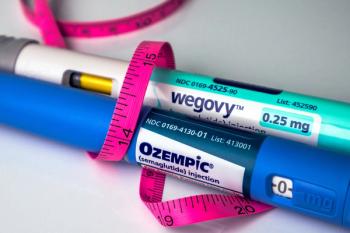
A Class of Their Own-- The Unique Challenges of Type I Diabetes
Understanding the unique challenges that patients with T1D face can help pharmacists better serve this patient population.
While many aspects of diabetes care are universal, patients with type I diabetes (T1D) often face a unique set of obstacles and challenges.
Understanding those challenges can help pharmacists better serve this patient population and can lead to the development of strategies specifically aimed at achieving better adherence and outcomes.
According the American Diabetes Association, approximately 1.25 million Americans – 5% of the population– were living with T1D in 2012. The diagnosis is often made when patients are young, and therapy often begins insulin. These two factors make patient education an essential aspect of the care plan.
Pharmacists can also help patients develop strategies to stay adherent-a common concern for those with diabetes. According to data from the Juvenile Diabetes Research Foundation, fewer than a third of people with T1D achieve their target blood glucose levels. However, through intervention, education, and support, pharmacists can serve as an accessible resource for patients with T1D and their families.
“We are the most accessible healthcare professionals,” says Jonathan G. Marquess, PharmD, CDE, FAPhA, the owner of nine pharmacies in Georgia.” The pharmacist is a very accessible person for a patient to talk to about diabetes and for help with access to their insulin and supplies.”
Providing Education
One of the biggest challenges in T1D is that often the disease is a new and unfamiliar to patients and their families.
“Genetics doesn’t really play as large of a role, so some nonadherence you may see can be attributed to the lack of disease state knowledge by the family members,” says Mary Carpenter, PharmD, an ambulatory care clinical pharmacist in Augusta University Family Medicine.
Typically, T1D is diagnosed at a younger age than T2D and patients may not have the education level to fully understand the disease and its complications. For this reason, education is often directed at the entire family or care-givers as well as the patient.
“We’re educating that child, but we’re also educating the entire family,” says Sadie Cox, PharmD, MS, MHA, pharmacy director at Le Bonheur Children’s Hospital in Tennessee.
Pharmacists are often an integral part of the care team from the moment of diagnosis.
Before joining Augusta University Family Medicine, Carpenter worked at a family medicine clinic in North Carolina and worked collaboratively with the clinic’s primary care physicians. The physicians would refer patients with diabetes who needed extra support or education to Carpenter, who would work closely with the patients to help them reach their goals before discharging them back to the family physician. Carpenter is now working to set up a similar program at Augusta University Family Medicine.
She says she sees pharmacists as an extension of the primary care physician and says pharmacists can provide close monitoring and follow-up.
“This allows for timely medication titrations and frequent assessents of diet and physicial activity and counseling of side effects,” she says. When working with patients, she helps explain the disease and discusses possible adverse effects if patients are not adherent.
“Explaining potential complications of the kidney and neuropathy and all of the other complications besides high blood sugar. . . it really gets them engaged,” she says.
This is particularly important for patients with T1D, who may also be facing different societal pressures at school or in sports that might make staying adherent a challenge.
According to research supported by the American Diabetes Association, during the teenage years, patients T1D go through rapid changes in biological, emotional, cognitive, and physical status that can make it difficult to maintain metabolic control.
Carpenter says adherence needs to be an active, voluntary, and collaborative process. She works with patients to have them set their own lifestyle, monitoring, and medication goals so that they are invested in their own care.
The Role of the Community Pharmacist
The clinic setting isn’t the only setting in which pharmacists can be a patient resource. Most of the pharmacists at Fry’s Food Stores (a chain of supermarkets with a major presence in Arizona) have completed a diabetes certification program so that they have the research and knowledge to assist patients who are in need.
Stephanie Spark, PharmD, pharmacy sales manager for Fry’s Food Stores, says pharmacists are able to help patients understand what to expect from the disease and how to monitor it, and to answer their questions about nutrition.
“That’s where we really can come into play. If patients have never used a meter before, we can help them . .. we can help them use proper injection techniques at different injection sites. . . things like that,” she says.
The pharmacies owned by Marquess have chosen to improve patient education by offering regular classes on diabetes and management of the disease.
“With Type I especially, there’s just so much new to learn for many people, especially on the nutrition side and physical activity,” Marquess says, who is also President of The Institute for Wellness and Education, a disease management company. “A lot of these patients are teenagers who are active in school and in sports, which can really run blood sugars low.”
Marquess says he also provides education to patients with T1D about checking their blood glucose levels and says it’s important that these individuals know they may need to check their blood sugar as many as six times a day.
Assisting with insulin
According to Carpenter, research has shown that fear of self-injection is one of the biggest contributing factors to non-adherence in patients with T1D.
“A big thing that pharmacists can do is walk these patients through their first injection.” She adds that she has demo pens patients can use that are filled with saline. Spark also says there can be a big learning curve about how to use insulin properly. She says the pharmacists can serve as a resource to help patients use insulin pens, pumps, or injectables.
“We are right there and readily accessible and can coach them through that,” she says.
Curbing costs
Fear of needles isn’t the only obstacle to adherence. Cost can also be factor. Carpenter says pharmacists can also help identify which therapies are best from a compliance and financial standpoint.
“A lot of these new medicines for diabetes and these new insulins are very expensive. Coming up with a regimen that’s affordable as well as one that’s not too cumbersome is really important,” she says.
In the retail setting, Spark says pharmacists can help patients find and sign up for patient assistance programs to reduce the cost and limit any barriers to adherence.
While pharmacists can play a valuable role in treating patients with diabetes, understanding what factors may influence adherence in T1D empowers pharmacists to be effective counselors and educators for patients in need.
Jill Sederstrom is a freelance writer based in Kansas City
Newsletter
Pharmacy practice is always changing. Stay ahead of the curve with the Drug Topics newsletter and get the latest drug information, industry trends, and patient care tips.




